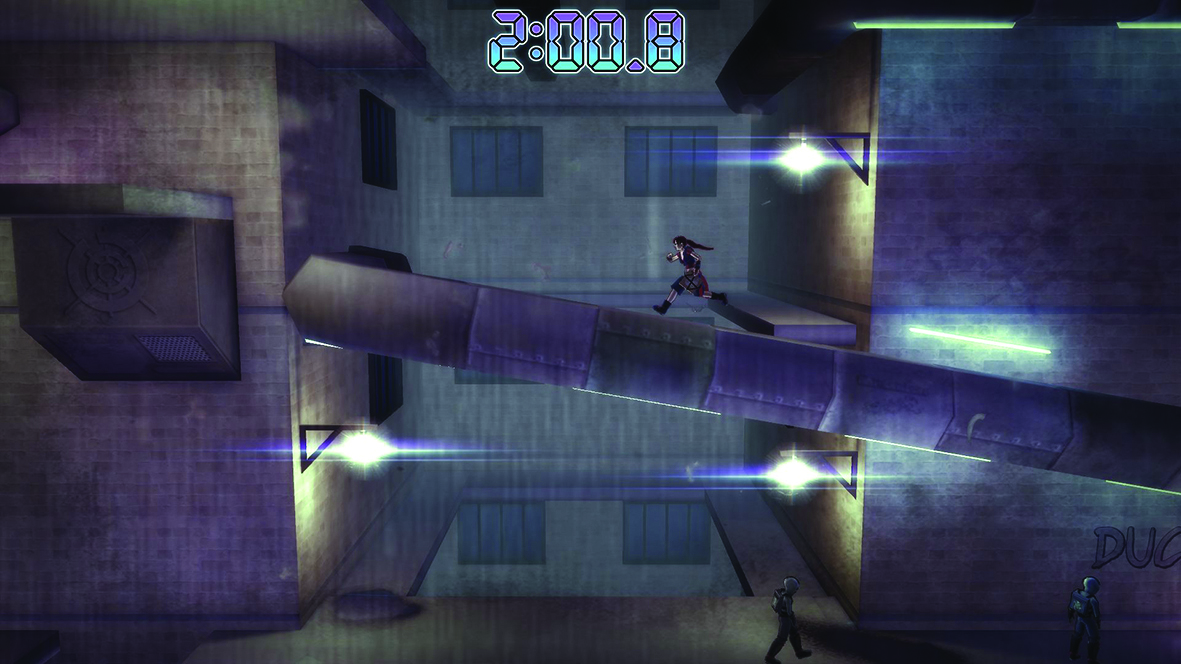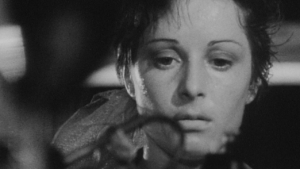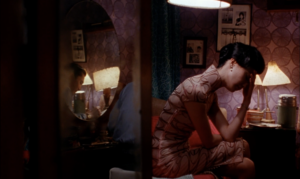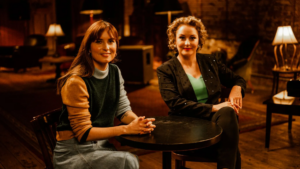In 2012, I went to an event at the Australian Centre for the Moving Image (ACMI) as a journalist writing about videogame culture. Robin Hunicke, an American videogame designer and producer, was there to talk about and demonstrate her PlayStation 3 game Journey in front of an audience. Journey had been a significant success that year – and still remains the go-to game for showing newcomers the power of videogame storytelling and a rare example of genuine crossover success between independent, art-focused game making and the mainstream.
It was an intimate, unusual event: Hunicke, along with a moderator, was afforded the time and space to play through her videogame at her own pace, pausing to comment on specific sequences and highlight interesting aspects that might otherwise be overlooked. At the end, there was time for audience questions. One man raised his hand: ‘I’m here with my daughter. We’re making a game together,’ he asked. ‘But one of the problems we frequently grapple with is the idea that games are for boys.’ Hunicke was obviously struck by this. ‘Games are for everyone,’ she replied.
That’s like saying food is for men, or fragrances are for women. It’s just not true anymore. We all have feelings; we all have emotions. We all want to play. You wouldn’t tell kids that girls can’t jump rope. You don’t say those things.
Today, it’s still a moment that I remember for its power and clarity.
I bring up this anecdote because one of the major events to have happened in the Australian videogames landscape over the last few months was an ACMI exhibition that celebrated Australian and New Zealand women in videogames. Code Breakers highlighted ten women who work in the games industry: Cherie Davidson, Lisy Kane, Brooke Maggs, Rebecca Fernandez, Elissa Harris, Nicole Stark, Siobhan Reddy, Maru Nihoniho, Erin Dupuy and Katharine Neil. They represent a range of roles (directors, designers, programmers, producers), ages, experience levels, as well as varied racial and gender identities. Some live and work overseas (Reddy and Davidson both work at the UK’s Media Molecule, and Neil lives in France), while others come from a variety of locations around Australia. It is a genuinely diverse grouping of women and work.
The exhibition was set up simply: held in a single room at ACMI, it displayed each creator’s work as well as a brief profile. The games were also a genuinely diverse collection – from major console works like LittleBigPlanet (directed by Reddy, 2008) to independently produced, site-specific games like Objects in Space (programmed by Harris, forthcoming in 2018), which requires an elaborate and bespoke hardware set-up that emulates the design of a real space capsule.
There were certainly a few highlights. Ninja Pizza Girl (2015) is a smart platforming game that gives us characters not usually seen in videogames (such as a young woman delivering pizzas). Hailing from Noosa, it was designed by Stark, her husband and her daughter – the family was described by Australian game website Kotaku as ‘a modern day Swiss Family Robinson’ – under the brand Disparity Games. Another was Māori Pā Wars, a tower-defence game directed by Nihoniho (who, in 2016, was named Member of the New Zealand Order of Merit for services to gaming and mental health) that features Maori characters and native New Zealand creatures.
Each Code Breakers display also gave these women space for a statement of purpose or a reflection on their practice. By far the most compelling of these came from Neil, who made her reputation in Australia as the creative force behind the groundbreaking political game Escape from Woomera in 2003 and as the co-founder of the Freeplay Independent Games Festival in 2004, before eventually moving to France, where she completed a PhD in 2015. Her statement presented visitors with something a little more pointed:
Behind every cashed-up, game industry man-child you’ll find at least a few women, quietly working away on your favourite game franchise […] If you want to see more of us, support the unionisation of developers and public funding of games as culture.
With women constituting only 15 per cent of workers in the Australian games industry (while making up almost 50 per cent of players), Code Breakers was indeed a significant intervention into how we talk about game makers in Australia. However, when attending a launch event for the exhibition at ACMI, in the exact same room in which Hunicke had spoken five years earlier, I was struck by what had changed in that time – and by what hadn’t.
An exhibition like Code Breakers would have been unthinkable even five years ago; making a deliberate tribute to Australia’s and New Zealand’s women game makers just wasn’t on the agenda. In the years since, we’ve seen widespread and highly visible abuse as well as the disenfranchisement of women at the hands of regressive movements like Gamergate – as well as a determined and hard-fought pushback from women and minorities in the industry.
A lot has changed, yes – but I couldn’t help feeling as though too much has remained the same. At the Code Breakers launch, a young woman put up her hand and asked the speakers (most of whom were featured in the exhibition) what could be done about the idea that games are just for boys. ‘Well, that’s just not true,’ replied one speaker.
I’m sure Robin Hunicke would agree.





